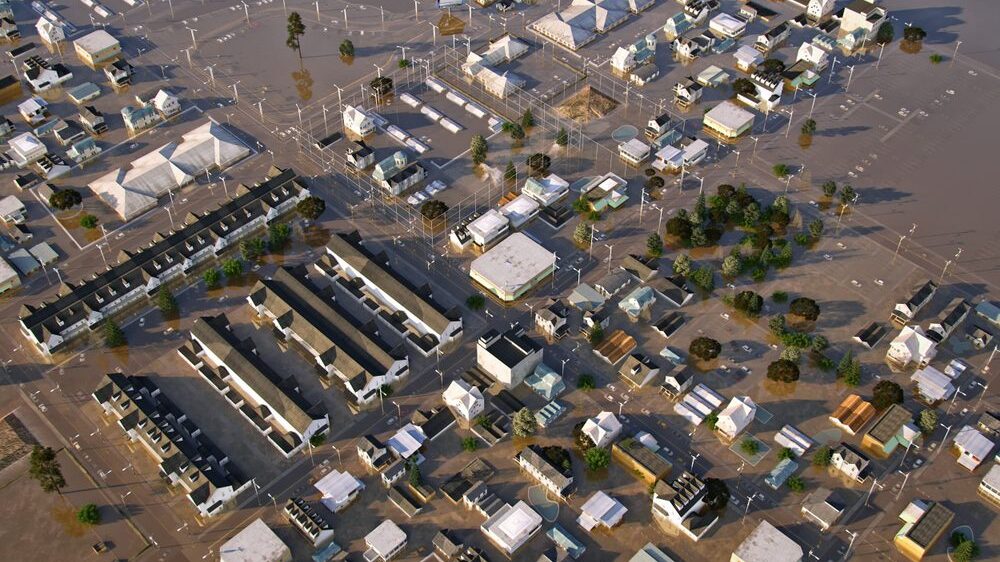Ukrainian surveillance drones captured a car packed with explosives atop the Nova Kakhovka dam just days before the explosion that resulted in the catastrophic flooding in southern Ukraine. Meanwhile, even though the flood claimed more lives on the Russian side of the Dnieper River, Russia refused the UN’s offer to help civilians in the affected area.
The pictures, obtained by the Associated Press and published on Sunday, June 18th, also appear to show the vehicle parked with its rear to the southern, Russian-controlled end of the dam. Moreover, a cable appears to be attached to it, also running toward the Russian defensive lines. Looking through its sawed-off roof, it appears the car has been packed with large barrels of what authorities suspect is explosive material, as well as something that resembles a landmine.
AP News: Russia had means, motive and opportunity to destroy Ukraine dam, drone photos and information show
— I am that… (@Nievenegro) June 18, 2023
Images taken from above the Kakhovka Dam and shared with the AP appear to show an explosive-laden car atop the structure. https://t.co/KTukffxIc8 pic.twitter.com/WfK58UHZ8S
So far, both Ukraine and Russia have been accusing each other of the destruction of the dam. But whereas Kyiv has been saying that the explosion was caused by mines planted on the structure, Moscow insists that it was missiles that caused the dam to burst. But according to Ukraine, that version fails to account for a blast so strong that it registers on seismic monitors.
Further intelligence suggests that Russian troops also mined the hydroelectric plant’s machine room. According to both Ukrainian and U.S. intelligence, unreleased drone footage exists showing Russian soldiers encamped on the southern side of the dam, walking back and forth, and entering the machine room.
In fact, a Ukrainian special forces officer told the AP that the car bomb alone could not have brought down the Kakhovka dam. But together with another, bigger explosion, originating from the machine room, it might have.
“It’s a regular practice, to mine [places] before a retreat,” Illia Zelinskyi, a commander of the Ukrainian Armed Forces told the AP. “In this context, their actions were to disrupt some of our supply chains as well as complicate a crossing of the Dnieper for us.”
However, some critics already pointed out that based on the satellite images that the American tech company Maxar has been continuously providing of the broken dam, the white car—or at least something that looks just like it—appears to be still there, intact, far away from the impact area and the machine room and towards the northern, Ukrainian controlled end of the structure. It is more likely to have been set up by the Russians for deterrence than for bursting the dam, one Twitter user noted.
My thought after some discussion (below) is that this is a car bomb – or a decoy one – set there by
— Adam Larson #EndtheOPCWCoverup #FreeAssange (@CL4Syr) June 19, 2023to be seen by
drone, so it could see inside, they could ponder how & why it would blow, & then scrap their on-the-ground sabotage plans.
Regardless, the water from the reservoir flooded several villages, homes, and farmlands on both banks of the river, including the Russia-controlled town of Nova Kakhovka. Over 11,000 civilians have been evacuated on both sides, while the official death toll has risen to 52 with 35 people dying in the Russian-controlled areas and 17 on the Ukrainian side.
While several international aid organizations are engaged in humanitarian and rescue missions on the northern bank, Russia refused to let the United Nations do the same on the other side.
“The UN will continue to do all it can to reach all people—including those suffering as a result of the recent dam destruction—who urgently need life-saving assistance, no matter where they are,” Denise Brown, UN humanitarian coordinator for Ukraine, said in a statement on Sunday.
“Aid cannot be denied to people who need it,” she said, urging Moscow “to act in accordance with their obligations under international humanitarian law.”






